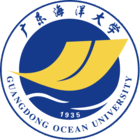详细信息
Distribution and risk assessment of microplastics in typical ecosystems in the South China Sea ( SCI-EXPANDED收录 EI收录) 被引量:32
文献类型:期刊文献
英文题名:Distribution and risk assessment of microplastics in typical ecosystems in the South China Sea
作者:Zheng, Xuanjing[1,2];Sun, Ruikun[2];Dai, Zhenqing[1];He, Lei[2];Li, Chengyong[1,2]
机构:[1]Guangdong Ocean Univ, Shenzhen Inst, Shenzhen 518108, Peoples R China;[2]Guangdong Ocean Univ, Sch Chem & Environm, Zhanjiang 524088, Peoples R China
年份:2023
卷号:883
外文期刊名:SCIENCE OF THE TOTAL ENVIRONMENT
收录:SCI-EXPANDED(收录号:WOS:000992362700001)、、EI(收录号:20231814036930)、Scopus(收录号:2-s2.0-85153870667)、WOS
基金:This work was supported by Shenzhen Science and Technology Program (KCXFZ202002011011057, JCYJ20210324122606017, GJHZ20210705142000003) , Special Funds for Science Technology In- novation and Industrial Development of Shenzhen Dapeng, New District (KJYF202001-06) and Guangdong Basic and Applied Basic Research Foundation (2022B1515020091, 2021A1515010291) .
语种:英文
外文关键词:Microplastic; Reef coral; Mangrove; Seagrass bed; Macroalgae
外文摘要:Microplastic pollution in the marine environment has attracted worldwide attention. The South China Sea is considered a hotspot for microplastic pollution due to the developed industries and high population density around the South China Sea. The accumulation of microplastics in ecosystems can adversely affect the health of the environment and organisms. This paper reviews the recent microplastic studies conducted in the South China Sea, which novelty summarizes the abundance, types, and potential hazards of microplastics in coral reef ecosystems, mangrove ecosystems, seagrass bed ecosystems, and macroalgal ecosystems. A summary of the microplastic pollution status of four ecosystems and a risk assessment provides a more comprehensive understanding of the impact of microplastic pollution on marine ecosystems in the South China Sea. Microplastic abundances of up to 45,200 items/m3 were reported in coral reef surface waters, 5738.3 items/kg in mangrove sediments, and 927.3 items/kg in seagrass bed sediments. There are few studies of microplastics in the South China Sea macroalgae ecosystems. However, studies from other areas indicate that macroalgae can accumulate microplastics and are more likely to enter the food chain or be consumed by humans. Finally, this paper compared the current risk levels of microplastics in the coral reef, mangrove, and seagrass bed ecosystems based on available studies. Pollution load index (PLI) ranges from 3 to 31 in mangrove ecosystems, 5.7 to 11.9 in seagrass bed ecosystems, and 6.1 to 10.2 in coral reef ecosystems, respectively. The PLI index varies considerably between mangroves depending on the intensity of anthropogenic activity around the mangrove. Further studies on seagrass beds and macroalgal ecosystems are required to extend our understanding of microplastic pollution in marine environments. Recent microplastic detection in fish muscle tissue in mangroves requires more research to further the biological impact of microplastic ingestion and the potential food safety risks.
参考文献:
![]() 正在载入数据...
正在载入数据...


